 |
|
|
||||||||||||||||||||||||||||||||||||||||||||||||||||||||||||||||||||||||||||||||||||||||||||||||||||||||||||||||||||||||||||||||||||||||||||||||||||||||||||||||||||||||||||||||||||||||||||||||||||||
|
Here is a female deer tick, greatly enlarged, shown with a dime for scale. |
|||||||||||
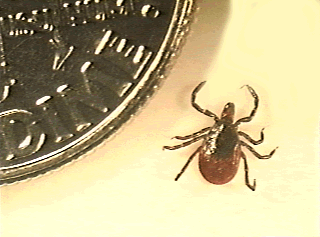 |
|||||||||||
|
Here is a zoomed-in close-up view of the 4 stages of the Deer Tick. |
|||||||||||
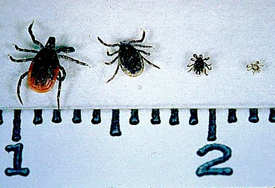 |
|||||||||||
|
Finally, here it is in actual size - 1.4 centimeters. Can you even see the fourth one? |
|||||||||||
|
|
|||||||||||
|
Here is another good picture to help differentiate between deer ticks and dog ticks. |
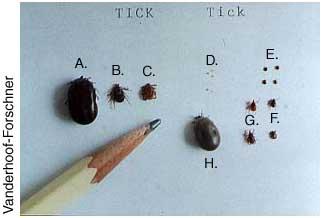 |
|
|
Source: http://www.health.state.ri.us/disease/communicable/lyme/facts.htm |
|
Also according to the RI Department of Health, there are two other species of ticks that carry Lyme disease: One is I. Pacificus, or the Western Black-Legged Tick which, and is VERY similar to I. Scapularis,
the Black-Legged Tick (Deer Tick). The Western Black-Legged Tick is found primarily in the Pacific US and British Columbia.
|
|
and Amblyomma Americanum, or the Lone Star Tick, (which is found mainly in the southeastern US west into Texas; pockets found in New Jersey, Fire Island, NY, and Prudence Island, RI). The Lone
Star Tick is a little bit larger, with an adult being as large as 1/3 of an inch unengorged, but can be easily differentiated from the Common Dog Tick by a white "Lone Star" dot on the back: |
||||||||||
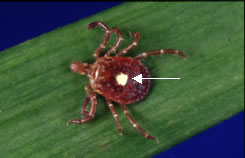 |
||||||||||
|
"The white dot on the scutum is evident and identifies this tick as a Lone Star tick, which can also carry Lyme disease. Also note the long mouth parts. In all engorged ticks the scutum does not expand and is a good place to start for identification." |
||||||||||
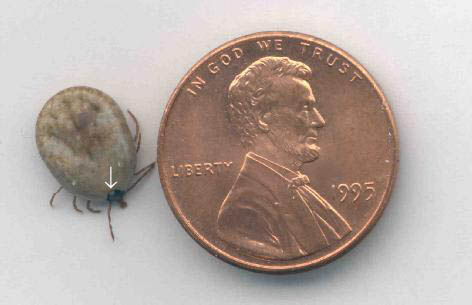 |
||||||||||
|
Source: Dr. Marc Golightly http://www.path.sunysb.edu/labs/tickpics/TICKpic.htm |
||||||||||
|
There is a wonderful page of very detailed photos of different tick species here: http://entomology.unl.edu/images/ticks/ticks.htm |
||||||||||
|
Here is a map showing where the Centers for Disease Control expects to see Lyme Disease |
||||||||||
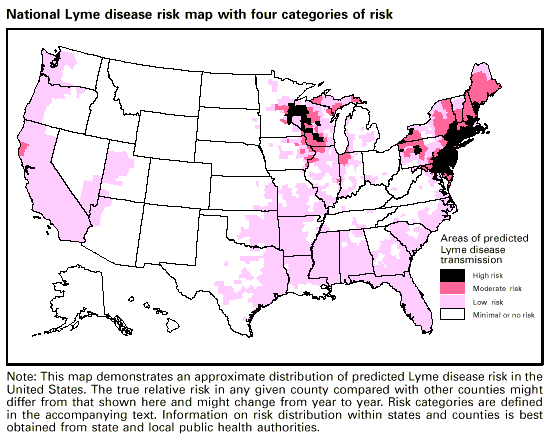 |
||||||||||
|
...and here is a map showing how often Lyme Disease actually occurred in 2005 in the United States, County-by-County. From the Centers for Disease Control and Prevention. |
||||||||||
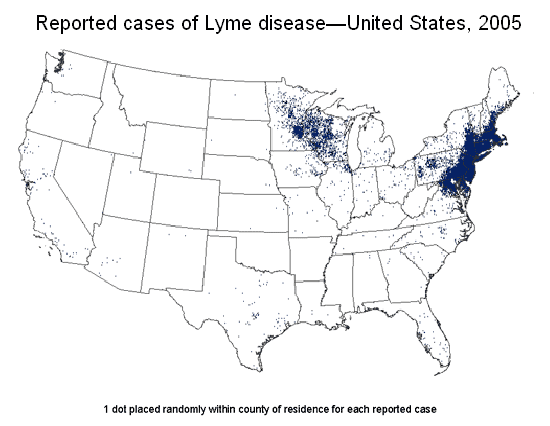 |
||||||||||
|
|
||||
|
While dog ticks are not healthy for your dog, it is the Deer Tick, the Lone Star Tick and the Westerm Black-Legged Tick that carry Lyme Disease. You can easily see dog ticks, but those three are tough to see. So unfortunately it is sad, and almost funny, but true: If you can easily see the tick, there's nothing to worry about. |
||||
|
|
||||
|
[Home] [Get A Sheepdog] [Community] [Memories] [OES Links] [OES Photos] [Grooming] [Merchandise] [Search] |
|
Please contact our Webmaster with questions or comments. |
|
|
Copyright 2000 - 2011 by OES.org. All rights reserved. |

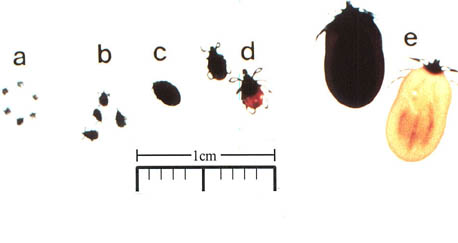
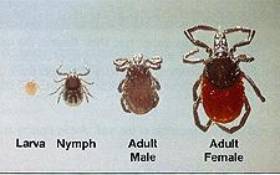
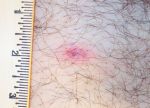
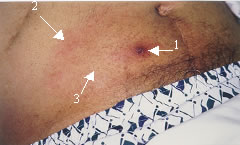 His had progressed a little farther than mine had. He had Lyme disease.
His had progressed a little farther than mine had. He had Lyme disease.